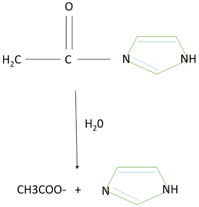MCQs
Total Questions : 35
| Page 4 of 4 pages
Answer: Option A. -> Change in conformation 3D structure of protein from low activity form to high activity form
Answer: (a).Change in conformation 3D structure of protein from low activity form to high activity form
Answer: (a).Change in conformation 3D structure of protein from low activity form to high activity form
Answer: Option D. -> Hydrolysis of acetyl imidazole is an example of this type of catalysis
Answer: (d).Hydrolysis of acetyl imidazole is an example of this type of catalysis
Answer: (d).Hydrolysis of acetyl imidazole is an example of this type of catalysis
Answer: Option A. -> Bases which catalyze the reaction by accepting a proton
Answer: (a).Bases which catalyze the reaction by accepting a proton
Answer: (a).Bases which catalyze the reaction by accepting a proton
Answer: Option C. -> Acid base catalysis
Answer: (c).Acid base catalysis
Answer: (c).Acid base catalysis
Answer: Option A. -> Continuous assay
Answer: (a).Continuous assay
Answer: (a).Continuous assay


















